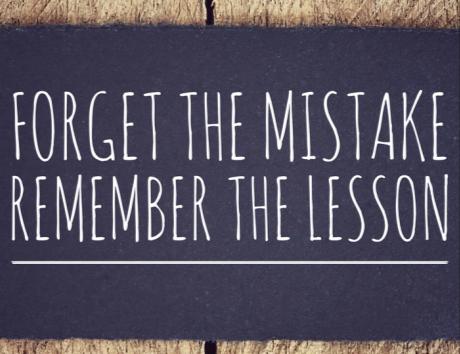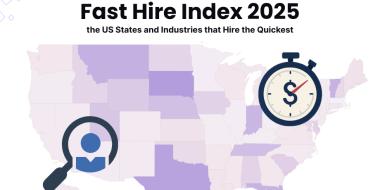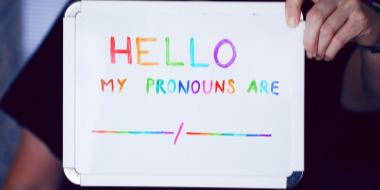10 Common Resume Mistakes and How To Avoid Them
If you’ve been applying for jobs regularly but not hearing anything back, you may want to double-check your resume to ensure that you haven’t made any of these 10 common resume mistakes. Your resume is the first point of contact with an employer, so make the best possible impression by presenting a compelling, error-free resume.

This article will cover the 10 most common resume mistakes as well as how and why to avoid them.
1. Including Irrelevant Information
Most employers will only spend less than 10 seconds scanning each resume that they receive, so it’s imperative to keep your resume succinct and focused. Include only information that is directly relevant to the job that you are applying for - there’s no need to include skills, work experience, or education details that aren’t pertinent.
However, you can still list your past work experience that may not seem relevant (such as your experience working as a cashier when you are applying for a customer service role) so long as you use the bullet points under your past job titles to highlight transferable experience and skills that you gained. For example, instead of detailing how you operated the cash register, include how you developed your customer service skills by interacting with customers while ringing up their purchases.
2. Not Tailoring Your Resume to Each Job Application
On a similar note, it’s crucial to tailor or target your resume to each job that you apply for. Read the job description carefully to identify keywords and phrases that describe the experience, skills, and characteristics that the employer is seeking in an employee. Then, use those same words and phrases in your resume to show that you have the desired traits and experience.
Additionally, be sure to use the company name and the exact job title that you are applying for in your resume summary or objective.
While customizing your resume for each job application takes a little bit of extra time, it shows that you are taking the job application process seriously and that you carefully read the job description. A tailored resume gives potential employers a better sense of how you will succeed in the position.
3. Including References
It’s no longer necessary to include your professional references on your resume, or to include the line “References available upon request.” Employers know that they can ask you for references, and they will likely do so later in the hiring process, such as after they have interviewed you. Including references on your resume uses up valuable real estate, and you’ll likely be better served by using that space to include more details about your experience, education, and skills.
Instead, create a separate references page that complements your resume. That way you will have it ready to go if/when the employer asks for it, but you don’t have to waste space on your resume. Be sure to choose your references wisely and ask them ahead of time if they will provide a reference for you. Include the names and contact information of your references as well as a short description of your working relationship.
4. Listing Job Duties Instead of Accomplishments
It can be tempting to list your job duties and responsibilities in the bullet points under each of your past positions. However, most employers probably already know generally what you did based on your job title so that information isn’t likely to be helpful or impressive.
Instead, focus on your accomplishments in the bullet points. Use action words and quantify your achievements with numbers and data whenever possible in order to demonstrate how you succeeded in your past roles.
5. Including a Photo of Yourself
Unless you are applying to a position that is directly dependent on your physical appearance (such as acting, modeling, or on-air television positions), there’s no need to include a photo of yourself on your resume - or any photos at all for that matter. A photo of yourself will just take up valuable space on your resume, and it might cause an employer to automatically reject your application in order to protect themselves from potential discrimination accusations.
Instead of including a photo on your resume, consider including your LinkedIn URL in your resume header. Employers will likely look you up on LinkedIn anyways, so this makes it easier for them to find you and they will be able to see a photo of you on your profile. If they’ve taken the time to look you up on LinkedIn, that means that your resume has already sufficiently impressed them, and discrimination is no longer such a concern at that point.
6. Including Salary Requirements or Past Salary Details
Including past salary details or salary requirements for the new position can turn an employer off, especially if the amount you’ve indicated is much higher or lower than what they had in mind. They also might send you a low-ball offer if you have included much lower previous salary information.
It’s best to leave all mention of your past and desired salary off of your resume. Save the salary negotiations for the interview or when the employer presents an offer.
7. Submitting a Resume That’s Too Long or Too Short
In general, a resume should be a single page for students, recent graduates, and professionals with less than 10 years of experience, and two pages for those who have more than 10 years of experience. However, the acceptable length of a resume is flexible, so long as everything you have listed on it is directly relevant to the job that you are applying for.
If you are applying for a high-level job, an academic position, or a job in another country where a longer resume or CV is customary, it’s acceptable to submit a resume that’s two or three pages or potentially even longer.
Ensure that the length of your resume makes sense for the position that you are applying for.
If you are applying for your first job, there’s almost no situation in which your resume would need to exceed one page. However, if you hold several advanced degrees, have numerous relevant published works, and possess many years of experience, anything less than two pages likely won’t be sufficient to fully describe your qualifications.
8. Grammar or Spelling Errors
Grammar and/or spelling errors on your resume are extremely unprofessional and can cause a potential employer to reject your application on that basis alone. Read through your resume several times and don’t simply rely on your computer’s spellcheck. You may find that it’s easier to catch errors if you print out your resume and read over the hard copy.
Expert Tip
9. Including Unnecessary Personal Information
Like adding a photograph of yourself, including unnecessary personal information can cause an employer to automatically reject your application to avoid potential accusations of discrimination. Leave off details like your marital status, gender, sexual orientation, age, place of birth, nationality, religious beliefs, political affiliations, whether you have children, descriptions of your physical appearance, and so forth.
The only exception to this would be if this type of information is directly relevant to the job, such as if the employer is specifically looking for a Catholic youth minister or something similar.
10. Incorrect, Missing, or Inappropriate Contact Information
If an employer can’t get in touch with you, you won’t be getting any job offers regardless of how qualified you are. Ensure that your contact information is accurate and up-to-date, and that it’s listed prominently on your resume.
Include your cell phone number and a professional email address. Avoid using a current work phone number or email address that you might lose access to, a non-professional email address that you created in high school, or a home phone number (unless you don’t have a cell phone).
Key Takeaways
It can take just one small mistake to get your job application rejected. Mitigate this possibility as much as you can by avoiding these 10 common resume mistakes, such as including a photo of yourself, not tailoring your resume to each job application, including salary information, and so forth. It's always a good idea to explore different resume examples to get inspired and compare against your own resume.
Not sure how to create a polished resume? Check out Jobseeker’s resume creation tool, which allows you to enter your information, test out a variety of different resume templates and styles, choose your favorite fonts and colors, and then download your resume instantly!
Impress potential employers with your resume
Follow step-by-step professional guidance to create a polished resume in minutes.






